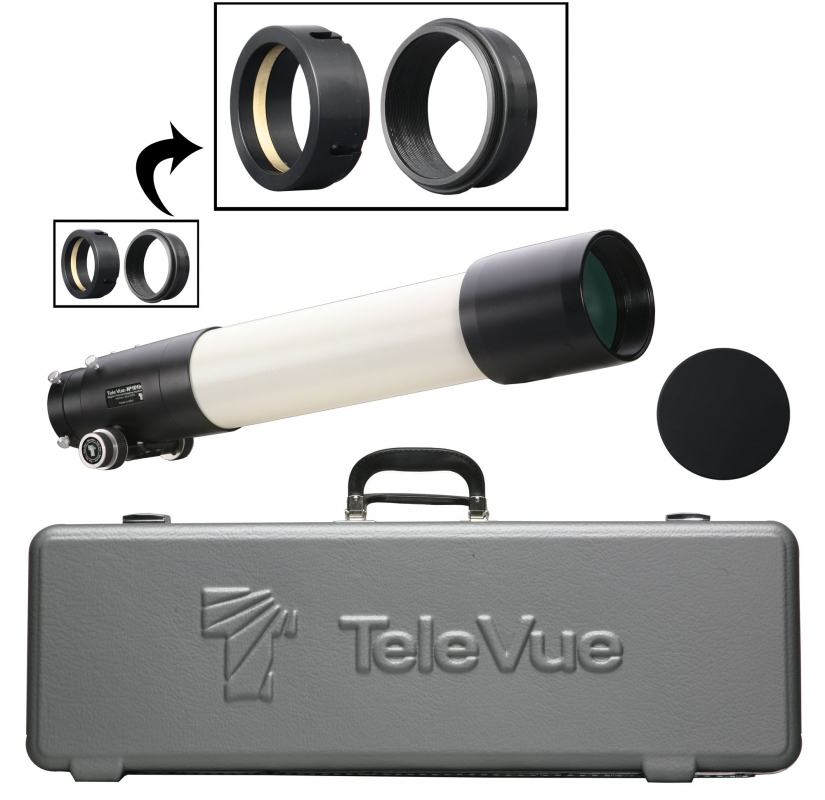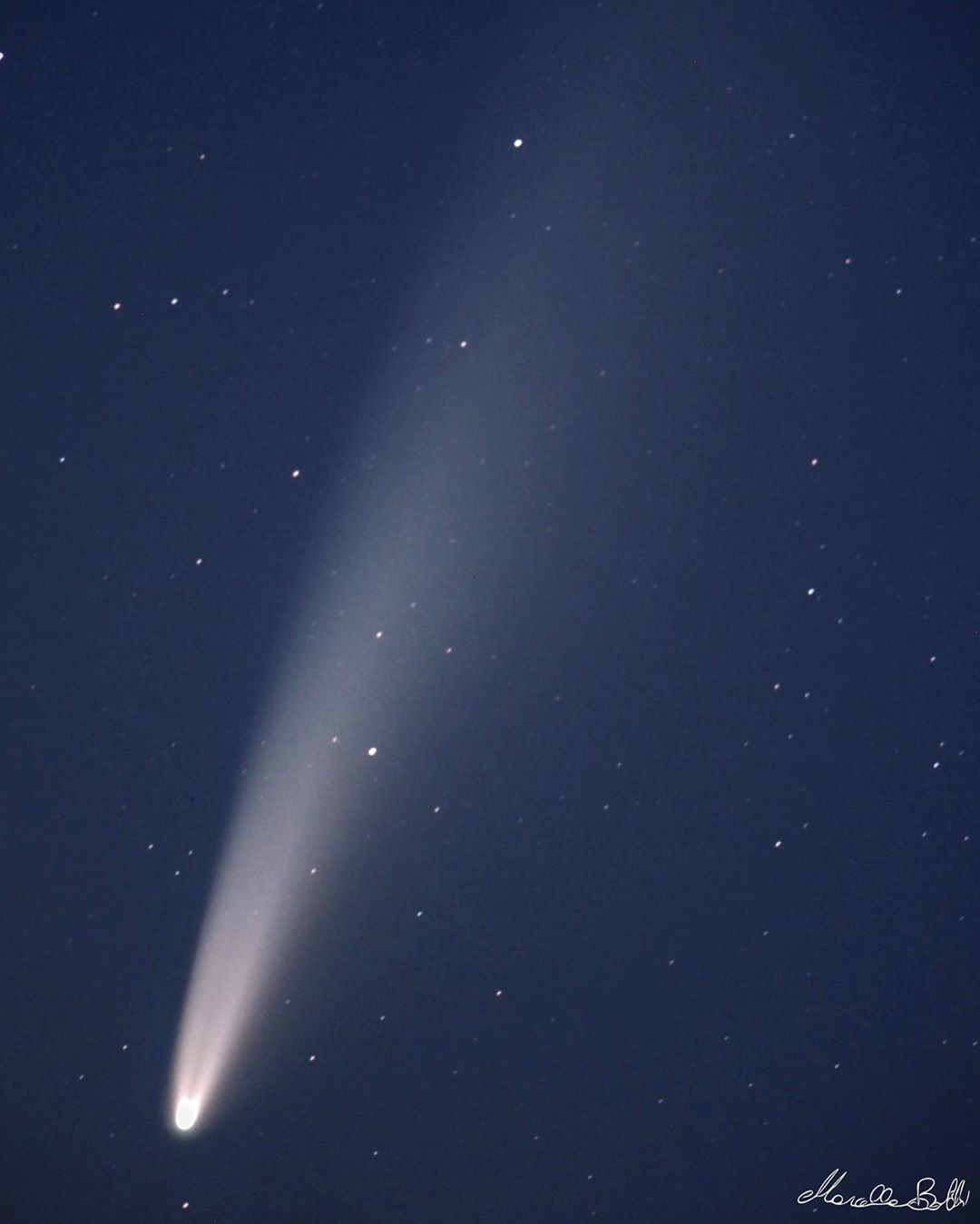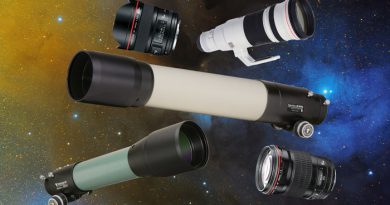NP101is: Imaging the Skies Over Louisiana

The Lagoon Nebula (also M8, and NGC 6523) in the constellation Sagittarius is well-known to amateur astronomers. It is a giant star forming region with an open cluster of stars embedded within (visible on the right side of the image). A giant O-type star pumps out massive amounts of ultraviolet light that energizes the gasses in the nebula and cause them to emit light in their distinctive characteristic colors. By taking images through emission line filters, astronomers can see what elements are contained in the nebula. In this image made with Hydrogen-alpha, Sulfur II, and Oxygen III filters, the bluish glow of ionized Oxygen predominates in the center of the nebula.
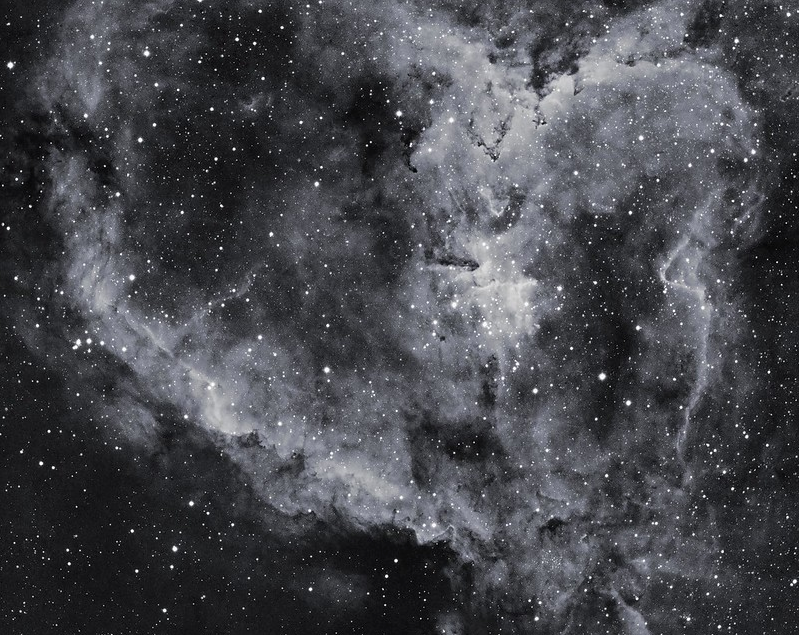
This black and white, high contrast image of the Heart Nebula (also IC 1805, and Sharpless 2-190) was created using a Hydrogen-alpha filter. This particular filter is used because emissions nebulae are mostly composed of hydrogen gas that is ionized by the same process as explained for the Lagoon Nebula image. For this object, giant stars in an open cluster at the center of the image, known as Melotte 15, power the glow of Hydrogen.
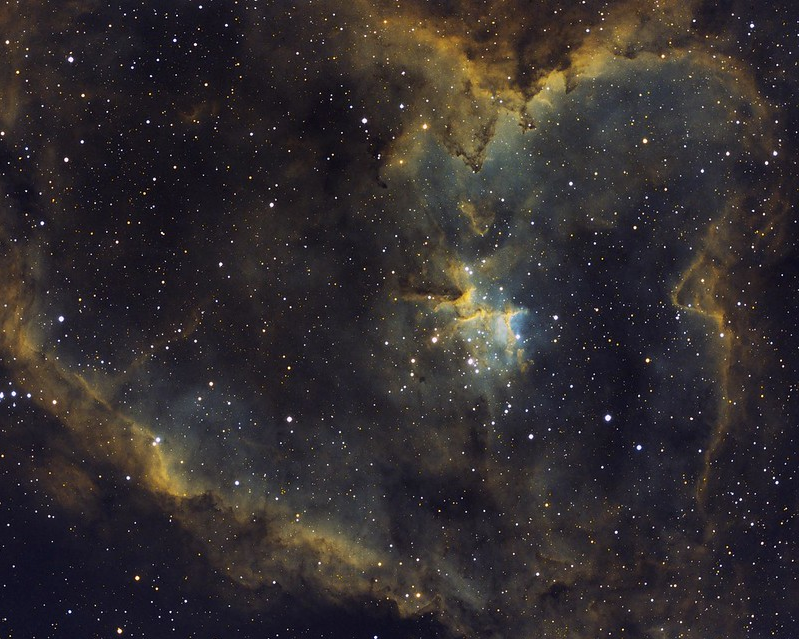
This is the Heart Nebula again, but with light from Sulfur II and Oxygen III emissions added to the Hydrogen-alpha light shown in the prior image. The color layers were balanced to maintain a white glow for the stars.
Astro-imager Phil Wollenberg took the images in this blog with our portable 4-inch Tele Vue-NP101is APO refractor. He tells us why he choose this scope to produce these images:
I did quite a bit of research on telescopes for astrophotography. The biggest challenge was finding a scope that was highly rated but also had a dedicated field flattener. I really liked the Tele Vue IS models because they are known for their quality and have the 4-lens (Nagler-Petzval) design, which do not require an additional field flattener. I have been really impressed with the sharpness of the Tele Vue NP-101is. During lunar viewing, other astronomers who look through my scope often comment on the sharpness, clarity, and lack of any false colors.
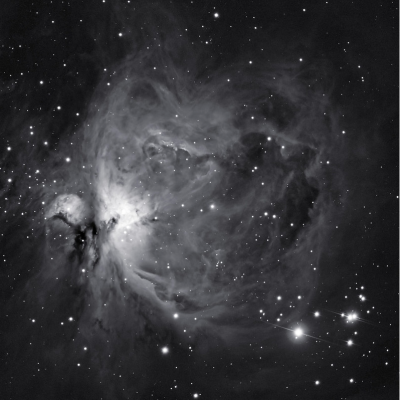
The Orion Nebula (also M42 or NGC 1976) is the most easily visible and closest region of massive star formation to us. Scientists believe there are 700 stars at various stages of evolution within the nebulosity you see in the photo. This means there are plenty of hot, giant, young stars to pump-up the electrons in the cloud of hydrogen gas in the nebula and cause them to emit light. The image here was made using visible light and the red light of hydrogen-alpha emissions. It was kept in the black and white color-space to create a high-contrast photo that captures wisps and folds in the structure. These features are shaped by shock waves formed from stellar winds within the nebula’s gas clouds.
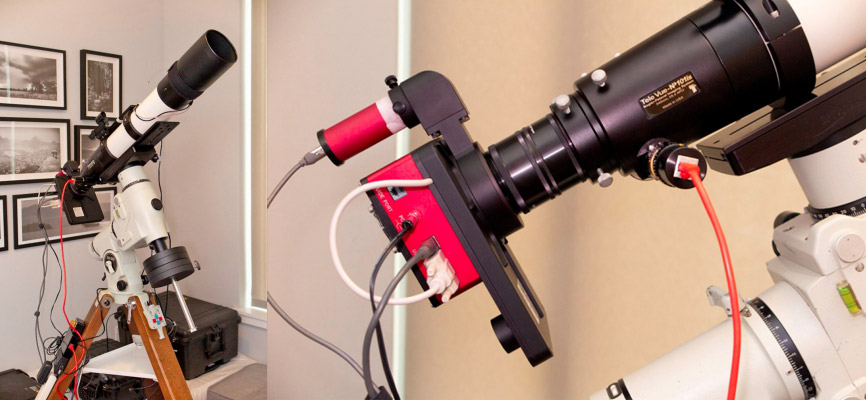
Sandras-Paulk Memorial Observing Site (SPMOS – http://www.cleardarksky.com/c/FrnklntnLAkey.html) is run by the local astronomy club, Pontchartrain Astronomy Society (astronola.org). It is situated about 1-hr. 30-min. north of New Orleans and provides dark enough skies to faintly see the Milky Way and easily see many of the galaxies even with the smaller aperture of the Tele Vue NP-101is. For astrophotography it easily provides enough contrast to capture images in LRBG and provides stunning contrast with HaOiiiSii filters. Best times for observing in Louisiana are fall through spring. Summer is also possible but can get warm and bring out the insects at dusk though usually it is bearable after the stars come out.
I process my images in PixInsight and Photoshop. I calibrate my lights with bias, dark, and flat frames. The flat frames are quite critical if you are using an off-axis guider as the prism or mirror can leave some vignetting on the images. I usually combine the LRGB projects in PixInsight and then transfer to Photoshop for final editing. For the narrowband projects, I take the master light frames from PixInsight and merge with clipping masks in Photoshop. This approach gives me more control over the color balance, which is more difficult when trying to merge the three wavelengths into a false-color image. I like to keep a little grain in my images but often will reduce the color noise of the sky glow by creating a star mask and reducing the background saturation. I usually give just a light touch with sharpening.
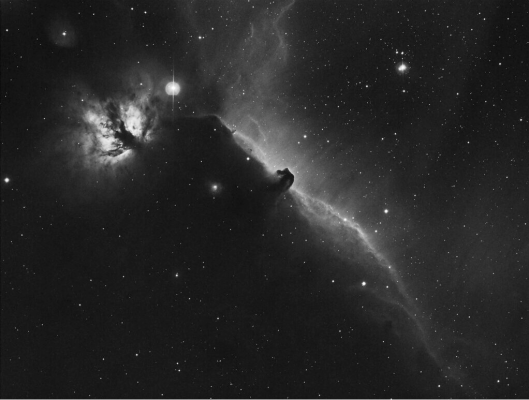
Like a giant neon sign, the Flame Nebula (top left, also known as NGC 2024 and Sh2-277) is powered by the ultraviolet light of the star Alnitak (to right of “Flame”) in the “belt” of the constellation Orion. In contrast, the Horsehead Nebula (on the image diagonal, also known as Barnard 33) is a dark cloud of gas just south of Alnitak. It is visible due to the red glow of hydrogen gas that is ionized by Sigma Orionis (upper right brightest star).
Did you observe, sketch, or image with Tele Vue gear? We’ll like your social media post on that if you tag it #televue and the gear used. Example:
#televue #np101is #ethos #jupiter
Do you want your Tele Vue images re-posted on Tele Vue Optics’ Social Media accounts? Use this hashtag for consideration:
#RPTVO
More Info
- Phil Wollenberg on Flickr.
- Sandras-Paulk Memorial Observing Site (SPMOS) is run by the Pontchartrain Astronomy Society
- Information on the Tele Vue-NP101is telescope (mobile site)
- Why Choose Tele Vue Telescopes and warranty (mobile site)



